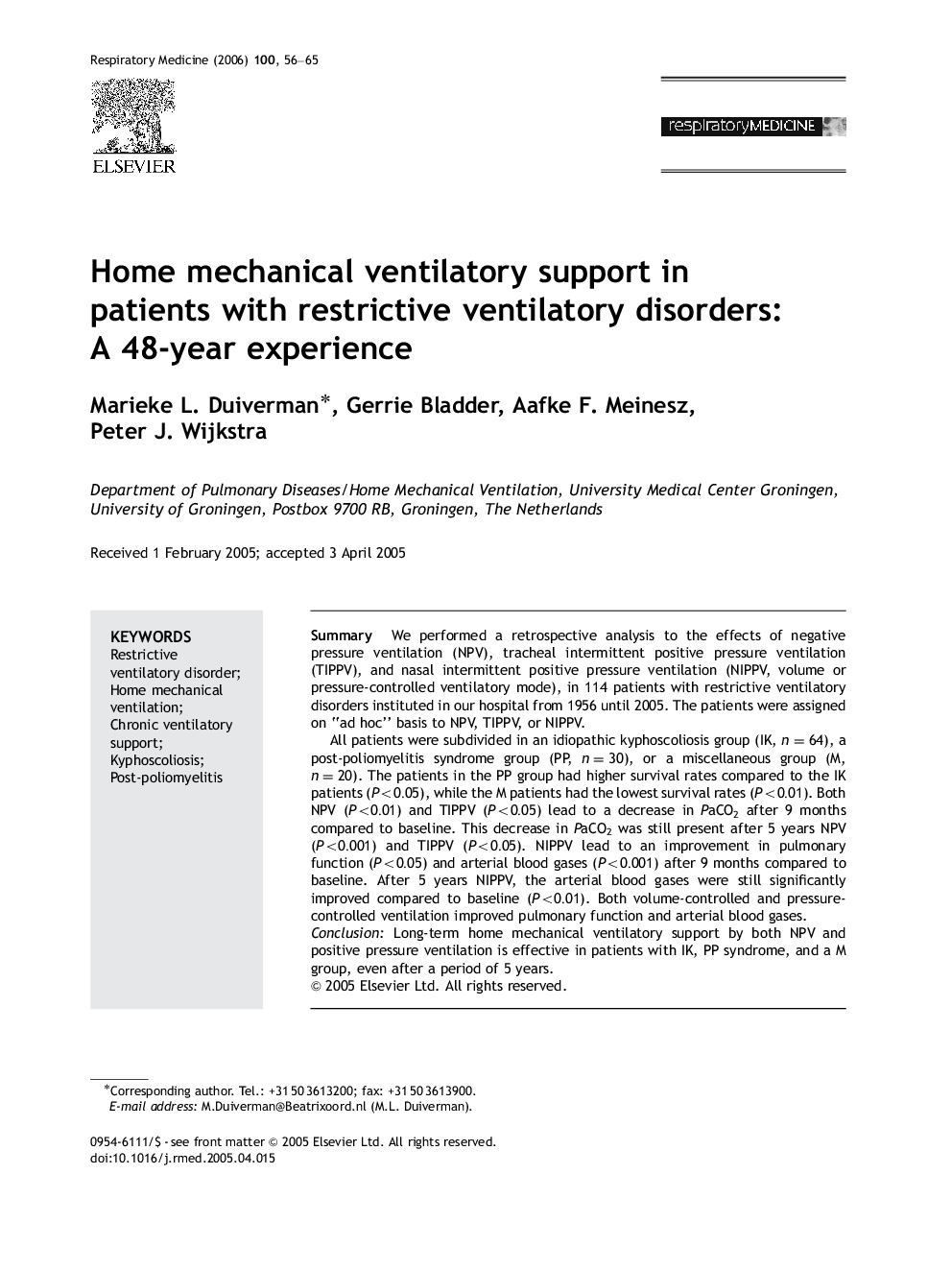| Article ID | Journal | Published Year | Pages | File Type |
|---|---|---|---|---|
| 4212266 | Respiratory Medicine | 2006 | 10 Pages |
SummaryWe performed a retrospective analysis to the effects of negative pressure ventilation (NPV), tracheal intermittent positive pressure ventilation (TIPPV), and nasal intermittent positive pressure ventilation (NIPPV, volume or pressure-controlled ventilatory mode), in 114 patients with restrictive ventilatory disorders instituted in our hospital from 1956 until 2005. The patients were assigned on “ad hoc” basis to NPV, TIPPV, or NIPPV.All patients were subdivided in an idiopathic kyphoscoliosis group (IK, n=64n=64), a post-poliomyelitis syndrome group (PP, n=30n=30), or a miscellaneous group (M, n=20n=20). The patients in the PP group had higher survival rates compared to the IK patients (P<0.05P<0.05), while the M patients had the lowest survival rates (P<0.01P<0.01). Both NPV (P<0.01P<0.01) and TIPPV (P<0.05P<0.05) lead to a decrease in PaCO2 after 9 months compared to baseline. This decrease in PaCO2 was still present after 5 years NPV (P<0.001P<0.001) and TIPPV (P<0.05P<0.05). NIPPV lead to an improvement in pulmonary function (P<0.05P<0.05) and arterial blood gases (P<0.001P<0.001) after 9 months compared to baseline. After 5 years NIPPV, the arterial blood gases were still significantly improved compared to baseline (P<0.01P<0.01). Both volume-controlled and pressure-controlled ventilation improved pulmonary function and arterial blood gases.ConclusionLong-term home mechanical ventilatory support by both NPV and positive pressure ventilation is effective in patients with IK, PP syndrome, and a M group, even after a period of 5 years.
